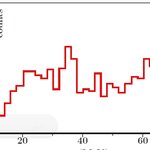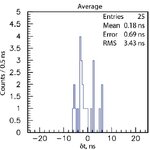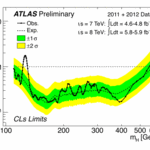Physics

In last weeks post,I introduced the Axial force, a force interacting between neutrinos, left handed neutrino repel other left handed neutrino while attracting right handed anti-neutrinos or indeed right handed neutrino (if there where any). We may follow interaction emitting or absorbing neutrinos to assign axial force charges to the other particles too. Electrons don't have a charge, but neutrons can decay to a proton, an electron and a neutrino, so either the proton or the neutron must have a axial charge. We don't see any extra forces in neutron scattering to a good precession, so we…

Anything is either true,Or not true,Or both true and not true,Or neither true nor not true;This is the Buddha's teaching.
--Nagarjuna (second century Buddhist monk and philosopher), the Mulamadhyamakakarika, Chapter XVIII, verse 8 (Note: there are other translations of this verse, for example, using "real" instead of "true.")
To a Western mind, this may seem like complete nonsense. True and not true are mutually exclusive and exhaustive states for any proposition--in fact, the law of the excluded middle, as this idea is expressed in mathematics, is the basis for much of (a certain kind of)…

Everybody seems to be talking about this new would-be particle, allegedly observed in diphoton decays in this paper by Kh. Abraamyan et al. at JINR, and consistent with an earlier claim of two physicists (van Beveren and Rupp) who had considered several distributions published by different collaborations. I will not discuss the story here since it has been done already in two posts here at Science 2.0, but rather provide guidance to those of you who trust my judgement.
And here it is: this is not a new particle. This is wishful thinking.
I first of all need to admit that I spent less than 15…

Russians at the JINR Nuclotron believe they have found a new particle, the E(38), as reported in this paper at ArXiv. The particle interacts with quarks and gluons only and appears in collisions on nucleii. Itdecays to two photons, and its width (inverse of decay rate) is less than 3 MeV.Early papers had claimed evidence of the particle as long ago as 2008, using data from the BaBar experiment, but it had not been widely reported. The new results are confirmation of this analysis, are heavy on the graphs, which clearly show a 38MeV peak in two photon events.The first paper claims the particle…

The start of the Universe may have been more like water freezing into ice than the popular conception of a Big Bang, say theoretical physicists from the University of Melbourne and RMIT University. They have a new hypothesis (conjecture?) which suggests that the secret to understanding the early universe is in the cracks and crevices common to all crystals, including ice.
Lead researcher on the project James Quach said their current ideas are the latest in a long quest by humans to understand the origins and nature of the Universe.
"Ancient Greek philosophers wondered what matter was made of…

Perhaps a bit too simple, but certainly appealing. Extensions of the Standard Model which imply the existence of a new U(1) gauge group to complement the SU(2)xU(1) structure of electroweak interactions have been put forth in a number of slightly different versions. All imply the existence of a new Z' boson, a heavier version of the Z0. For those not yet introduced to the latter, the Z0 is the neutral vector boson hypothesized by Glashow, Salam and Weinberg in the sixties to complete a triplet of weak currents and thereby allow the unification of weak and electromagnetic interactions. Its…

The weak force is the most mysterious force in the standard model, it is the only force thatisn't long range, thanks to the Higgs mechanism, the weak forces carriers gain a mass can only travel a very short distance before there borrowed energy runs out. The weak force also acts only upon particles with left handed spin, ignoring those with right handed spin. It is entirely mysterious why the weak force is left handed. I find that I can help explain the handedness of the weak force only we if introduce a new fifth force to nature.
Let us introduce a force that has opposite charges on left…

Little less than one year ago the world of fundamental physics was shaken by the bold claim of the OPERA collaboration, which produced a measurement of the time of flight of neutrinos traveling underground from Geneva to the Gran Sasso mine in central Italy. The beam of neutrinos, produced by the CERN SpS proton synchrotron, was observed to produce interactions in the large mass of the OPERA detector with about 60 nanosecond anticipation with respect to what would be expected for a particle traveling at exactly the speed of light (2439096.1+-0.3 nanoseconds, since the flight path is of 731221…
The so called "memristor" is an intriguing case for the sociology of science [2] and it still unfolds. Especially annoying are critics who do not grasp the core issue. They hand easily refuted charges to Goliath so he can point to them laughing: “Look, all that criticism is mere envious pseudo-science”.
UPDATE: new article on that the memristor has not been found now published by Nature group
There may also be serious plagiarism involved, but let us focus on the core issue, which is independent of technicalities about ‘pinched loops’ or that the devices have been around since 1967 [3], even…

The Higgs boson, whose discovery was confirmed by CERN on July 4th to the exacting 5-sigma level required in particle physics (meaning that the probability that the bulge in the data indicating a particle with mass-energy in the range of ~125 GeV is a random fluke is less than 1 in 3.5 million), is the first and only boson to be predicted to be a very bad ballerina--it can't twirl around!
This part of the story is yet to be confirmed experimentally, and CERN scientists are now working on using their data to confirm this highly peculiar theoretical property of this mysterious particle…